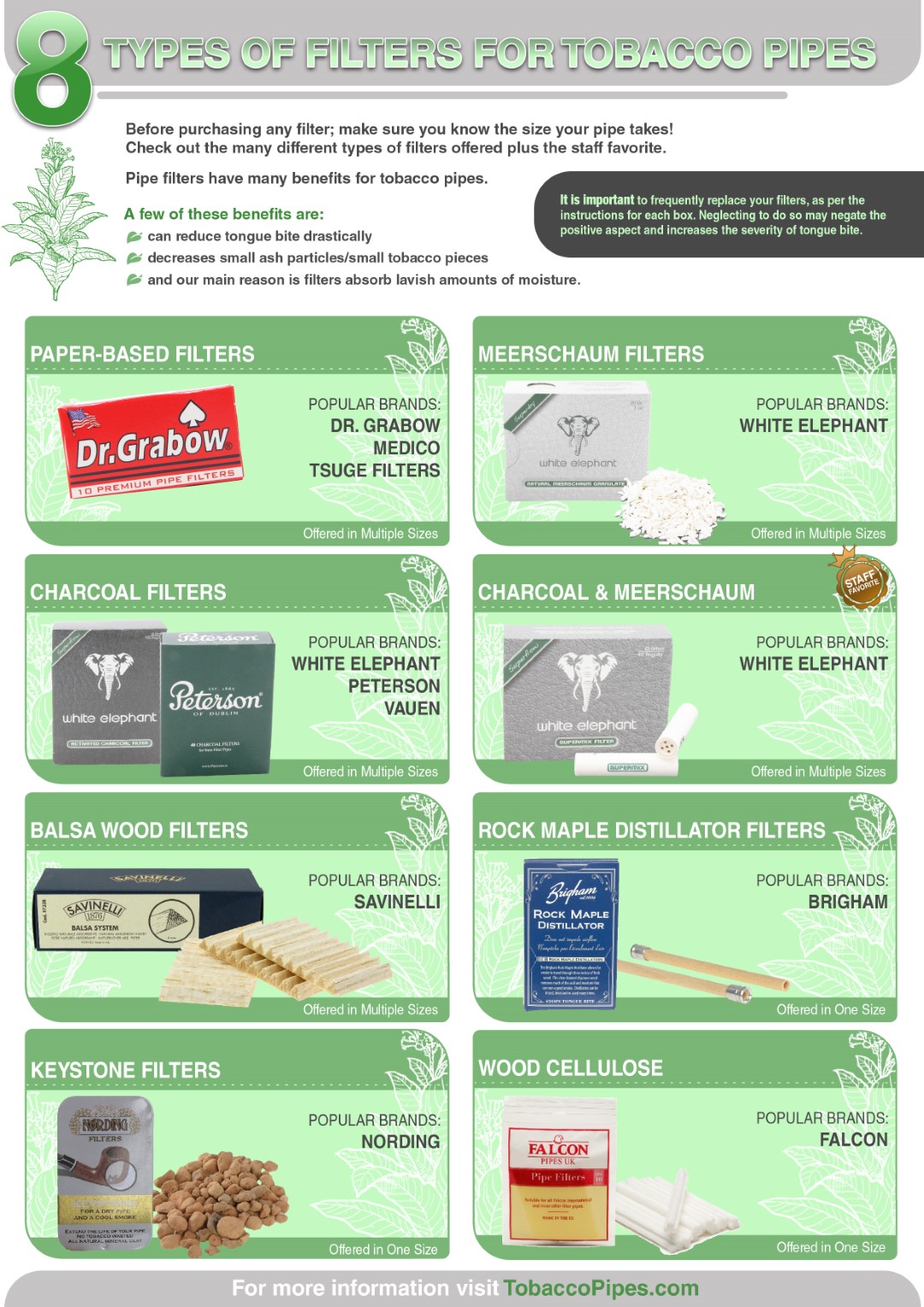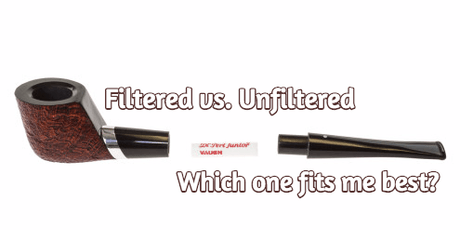Should you use a filter in your pipe, if so, what kind of filter should you use!
Posted by Greg Rosenberg on 7th Sep 2021
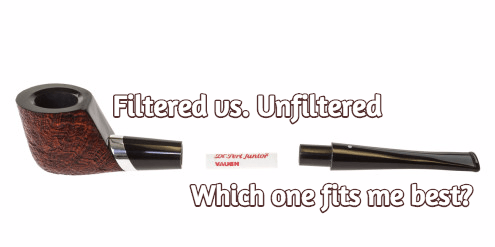
Choices, choices, choices. There are plenty of choices to make in this pipe smoking hobby, and most of us love that variety. Still, it can cause some frustration, especially for those getting acquainted with tobacco pipes. But once we do our research, the fog is lifted and we can appreciate one more opportunity to hone and customize our pipecraft for the personal indulgence that it is. So let’s get into one of the choices that is so often a source of debate between pipers—filtered or unfiltered pipe smoking.
This is one of those questions that can be overwhelming for beginners—you land on a forum and seasoned smokers with decades of experience can be giving opposite advice on the matter. Who’s right?
Both are right...for them.
Given the variety of filters out there, their particular purposes, and the pros and cons of each, there are quite a few factors to get familiar with to make an informed decision. We’ll go over everything you need to know about smoking a tobacco pipe with or without a filter so that you can better figure out what’s right for you.
Types of Pipe Filters
There are three common styles of Pipe Filters: Pass-Through filters, Absorption filters, and Condensers.

Pass-Through pipe filters
Pass-Through pipe filters are the most common. These consist either of a thick cotton tube with a hollowed out center, such as the Dr. Grabow Pipe Filters, or of a carbon-filled canister style filter, such as the Vauen Pipe Filter. White Elephant is another brand renowned for these filters, with many options in both charcoal and meerschaum filters—their Super Mix filters even use both materials.
The Pass-Through filter specializes in reducing the amount of tar in the smoke stream. The most prevalent complaint of Pass-Through filters is that, because of their high absorption levels, using them inhibits the flavor of your pipe tobacco.
Some popular Pass-Through Filters include:
- Paper-based filters
- Charcoal filters
- Meerschaum filters
Absorption Filters
Absorption filters are another classic style of pipe filter. The most common form of an Absorption filter, by far, are the 6mm and 9mm Savinelli Balsa Wood insert filters. Another favorite are the Brigham Rock Maple Distillator filters. Absorption filters work by drying out and cooling off the smoke flow before it strikes the palate. Unlike the Pass-Through filters, Absorption filters allow the smoke to flow between the bore and filter, allowing the smoke to contact a greater surface area for dispersing heat resulting in a cooler smoke with less moisture. Though Absorptive filters can help prevent tongue bite, they aren’t effective in filtering out particles in the smoke that may concern one’s health. However, most will attest that they don’t hinder flavor like Pass-Throughs. Keystones are another variety of Absorption filters. These are actually small stones that you put at the bottom of your pipe’s chamber which also serve to give you a drier, cooler smoke. Though this method is widely compatible as the filter doesn’t need to be sized appropriately with the bore, they do take up some tobacco-space, so they’re not always ideal for smaller bowls.
Some popular Absorption filters:
Condensers
Condensers are not at all similar to either of the other pipe filter types. Often called Stingers, Condensers are designed to stop moisture from entering the stem of your pipe. With a metal insert into the stem that has a small bore on the top, the Condenser keeps moisture from entering the stem of the pipe. The largest problem with condensers is that they make cleaning your pipe incredibly difficult.
Reasons to Smoke with a Pipe Filter
- Pass-Through filters will reduce the amount of “junk” that you take in.
- Absorptive filters and Condensers can limit the moisture in the smoke, making for a cooler smoke that will help prevent or hinder the severity of tongue bite.
- In addition, moisture build up can lead to a sour taste, ruining a smoking experience. Filters reducing moisture are especially beneficial for smokers who enjoy heavily cased and moist tobaccos.
- The resulting airflow resistance can help keep you from drawing too hard. This can especially be helpful for new smokers, as it can be easy to over-do it before finding the right cadence.
- Filters catch particles of ash and tobacco that may pull through, especially common for pipes with larger bores. Although, some brands offer “adapters.” Savinelli, for instance, all come with pipe filters, their pipes are designed for them. A pipe designed to take a filter may smoke awfully wet in the absence of a filter. The adapter can be inserted in place of the filter to achieve the physics of a pipe not made for filters.
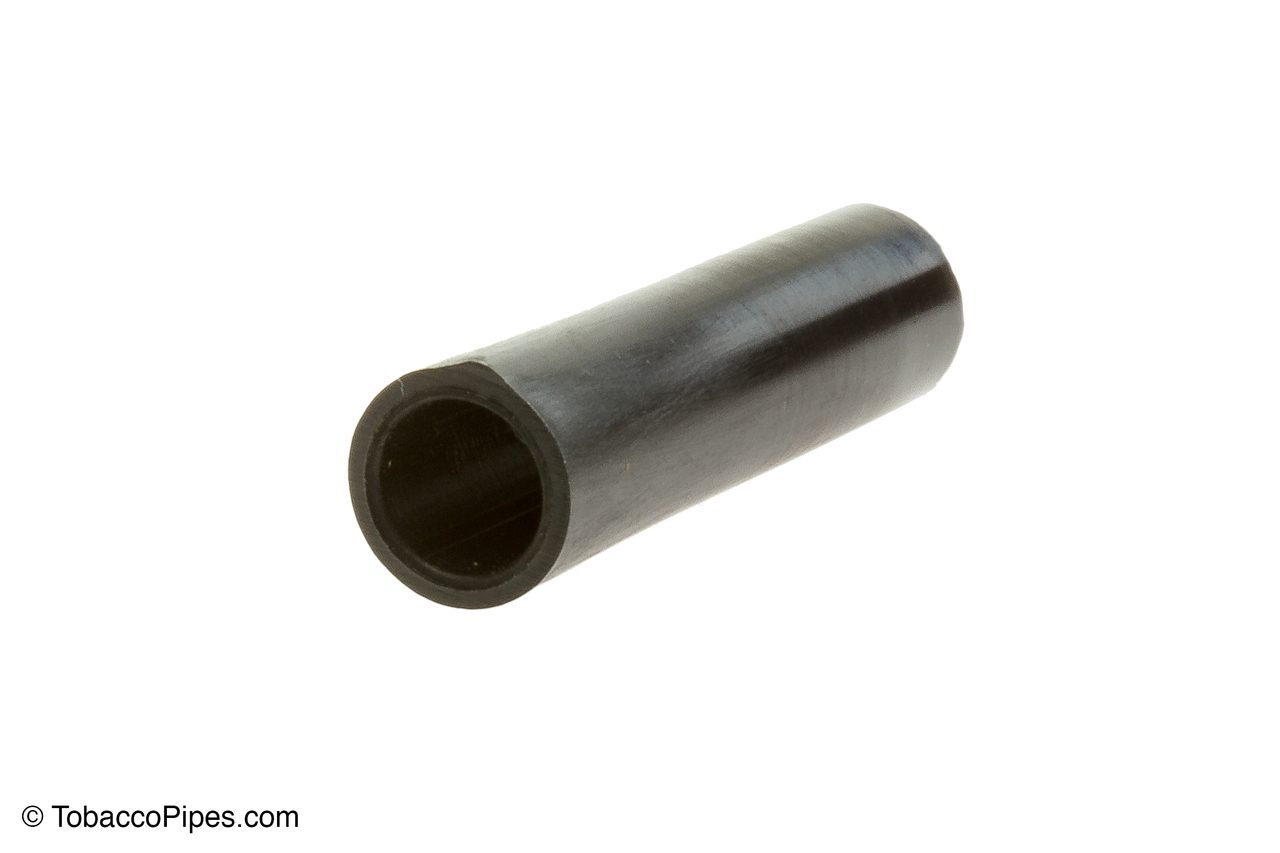
Reasons to Smoke an Unfiltered Pipe
- A loss of flavor is the concession one makes in filtering nicotine and tar. Though not much research has been done into the risk analysis of filter vs non-filter, it does seem a significant factor is whether one inhales or not. As a result, some pipe smokers will contend that filters are only helpful for those who do inhale, or that the level to which they are risking their health is insignificant.
- Using pipe filters makes cleaning your pipe difficult. You can’t run a pipe cleaner through your stem while smoking and leaving the filter in the pipe too long can have adverse effects.
- Of course, using filters means one more expense, especially if you are using them right and regularly replacing them.
Using a Pipe Filter
If you do decide to smoke your pipe with a filter, there are a few important things to know ahead of time. If not used correctly, a pipe filter can do more harm than good, or even exacerbate the very concerns for which you got the filters to address.
Inserting and Removing a Pipe Filter
Inserting and removing a pipe filter isn’t hard at all. If you’re new to pipe smoking, you may have one in your pipe without having realized it—many pipes come with a filter inserted. So you may find yourself removing one before inserting.
(Side note: My first pipe, a lovely Molina billiard, came with a filter already in. I probably realized this after it should have been replaced, but alas, I was still learning. So if you’re a newbie with your first pipe, check for a filter and learn from my rookie mistake!)
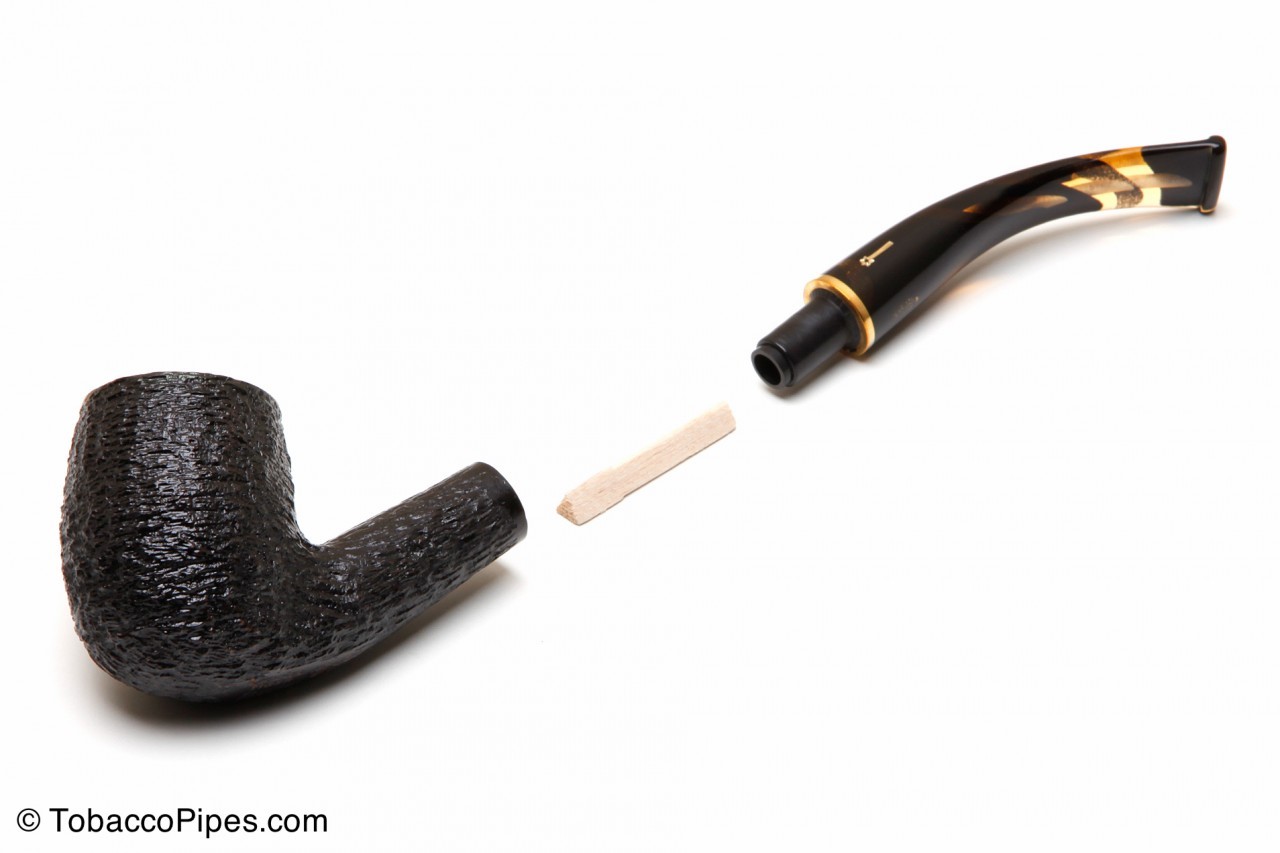
You’ll need to remove the filter often, whether it’s time to replace it or simply to get it out of the way so you can get a pipe cleaner through the draft hole. To remove the filter, start by separating the shank from the stem. You’ll see the filter inside the tenon (that’s the part protruding from the stem which slides into the mortise of the shank).
I’m implored to belabor that much repeated, yet essential rule—do not separate the stem from the shank until your pipe has totally cooled down. Assuming your pipe is cool, and you haven’t kept the filter in for too long (more on this next) you should have no problem carefully slipping the filter from the tenon.
Similarly, loading up a new filter is no harder. With your stem and shank separated (and preferably after having given a good run through with a pipe cleaner, may as well before you load the obstructive filter) simply feed the filter into the tenon. It shouldn’t give much resistance, but keep it gentle, as we should always be handling our pipes.
When to Change a Filter
It’s no surprise that different kinds of filters won’t last the same amount of time, so it’s important to know when you should change your filter.
- Paper filters and Keystones should be replaced after each use.
- Balsa Wood filters should be replaced regularly, probably after 2 uses.
- Meerschaum and Charcoal filters have a bit longer, they can last you about 4 uses
- The Brigham Distillator can last for quite a few uses when cleaned with water and dried. Depending on different factors, they may last nearly 20 uses. It’s important you inspect the filter after regularly and use your judgement. Brigham instructs that you replace the Distillator once it is dark brown and recommends alternating the filter so that one may be used while the other dries.
It’s important to remember that the difference in type or brand aren't the only relevant factors, other variables can affect the life of a filter such as the wetness of the tobacco being smoked or the smoker themself. We wish we could give you the definitive answer “this filter, this many smokes, case closed” but it just isn’t black-and-white in all cases. When in doubt it’s better to err on the side of caution and switch out your filters. More than just being ineffective in their intended purpose, there can be consequences to smoking with a filter beyond its usefulness.
When a filter is saturated with moisture it may expand. If this goes unattended it could be difficult to remove from the tenon. If it isn’t carefully dislodged, it could cause damage to the stem. In addition, the very nuisances which filters are meant to remedy—such as tongue bite and sour taste—can actually be more prevalent when using a filter that has passed its time.
Getting the Right Size Filter for Your Pipe
Of course, you don’t want to get filters that are incompatible with the pipe(s) you intend to use them with. Filters come in four diameters: 3, 4, 6, and 9mm. Be sure to check and see that you are getting the appropriate size to fit your pipe.
- Charcoal and Meerschaum filters are only available in 9mm.
- Balsa are available in 6 and 9mm
- Paper filters are available in 3, 4, and 6mm.
- For Keystones, the diameter of a pipe’s tenon isn’t relevant, they can fit any pipe. But as mentioned before, they do take up space in the chamber, so small bowls may not be best.
Approached from the other direction, (that is, choosing a pipe with a filter in mind) take in what you've learned here and consider what filter(s) you would like to try, and make sure the pipe you choose is compatible with that filter. Also keep size in mind. Let's say you want to try a Balsa, and you're a clencher—you like holding the pipe in your mouth. Well naturally, a 9mm is going to have more girth, so 6mm may be kinder on the jaw.
Packing With a Filter
If you’re used to not using a filter, keep in mind that you may have to adjust your packing habits to be a bit looser when using a filter. Many attest that what feels like the right pack for a non-filter pipe is too tight when using a filter and consequently restricts airflow. Start by packing much looser. As is often the case with our pipe smoking methods, play a little game of trial and error, you’ll find that perfect pressure (or lack thereof—many will advice to simply gravity pack the bowl, which would simply be letting the tobacco fall in and giving a few taps on the side of the bowl to let the tobacco settle into place without the pressure of a tamper or your finger).
Should I use a Filter in my Pipe?
At the end of the day, the question of whether or not to smoke with a pipe filter is answered how most of our pipe queries are—try it and see what works for you. How else can we really carve ourselves out as pipers with our individual preferences but to try it for ourselves?
In fact, the idea that it’s one or the other is a false dichotomy. Talk to any given pipe smoker and you’re likely to hear a range of scenarios in which a filter is and isn’t preferred.
“Well, I prefer a filter when I’m smoking a Corn Cob.”
“I keep one in this pipe that I use for these wetter tobaccos, but otherwise, no filter for me.”
“I’ll usually use one in pipes that come with filters.”
So just like you’ve done with tobacco blends, pipe shapes, prepping and smoking methods, and so on—go exploring and see what works for you.
Tobacco
